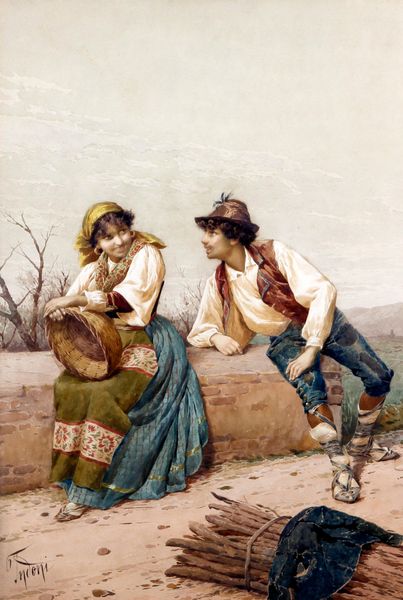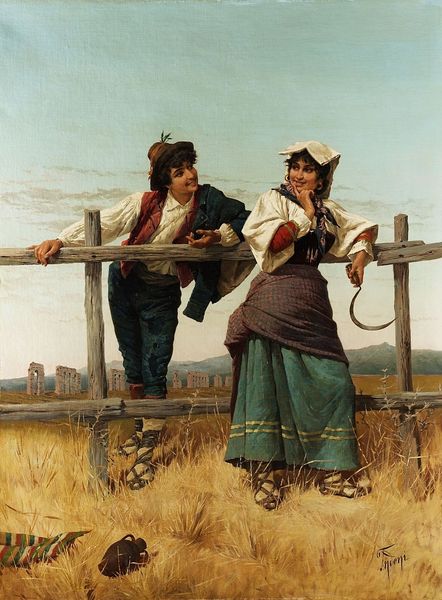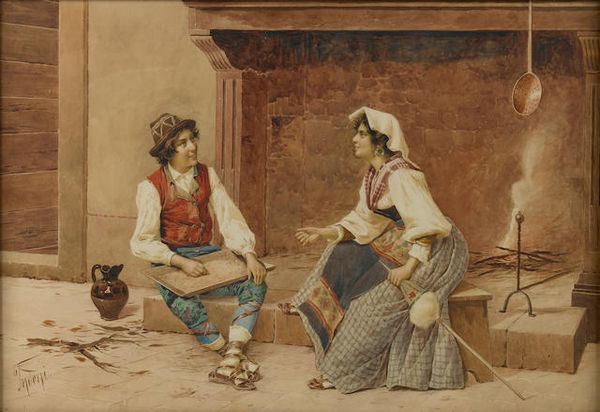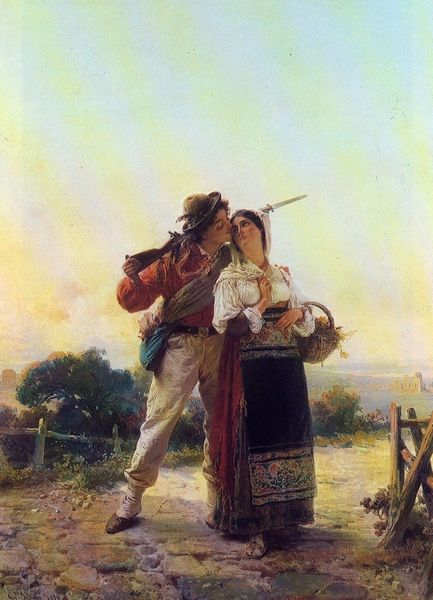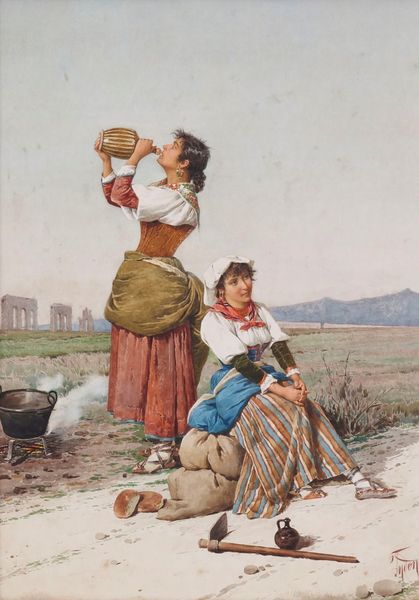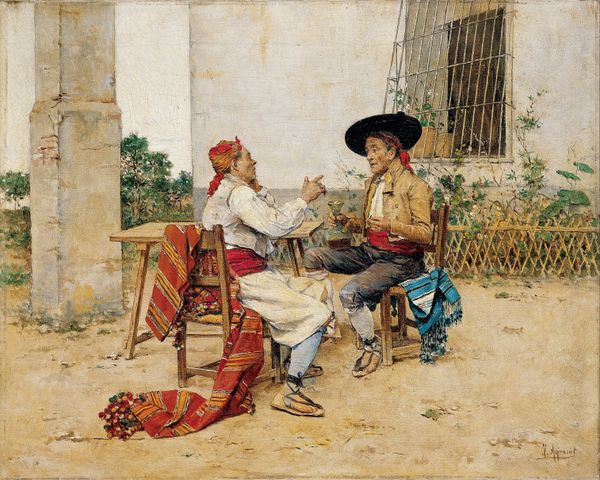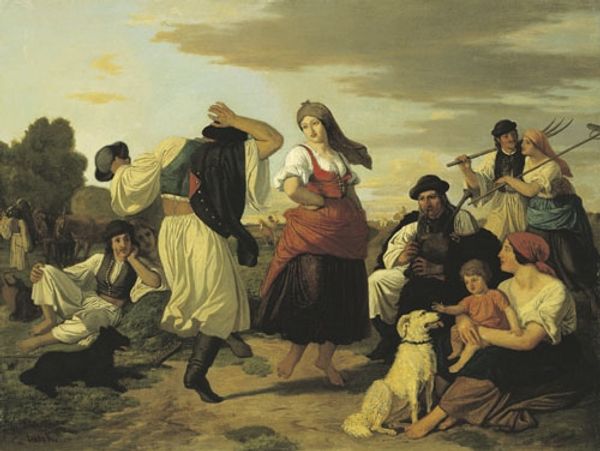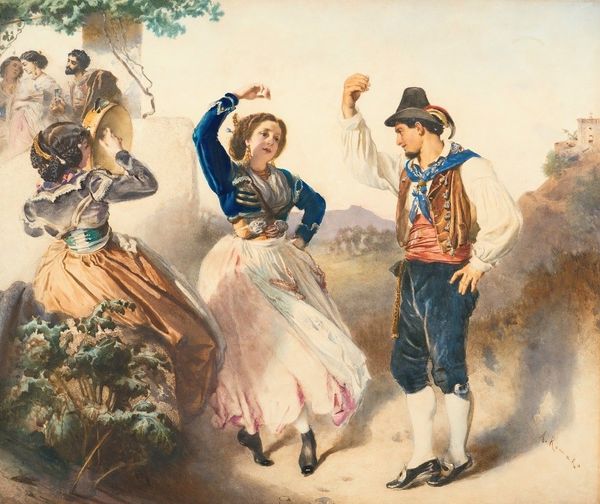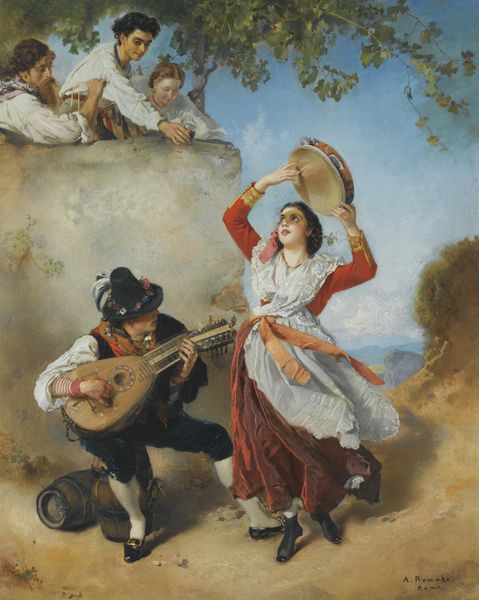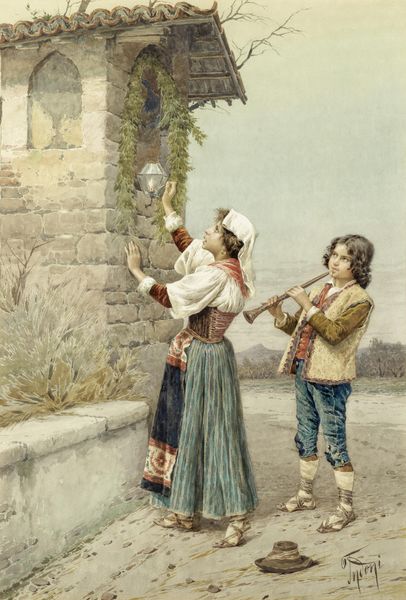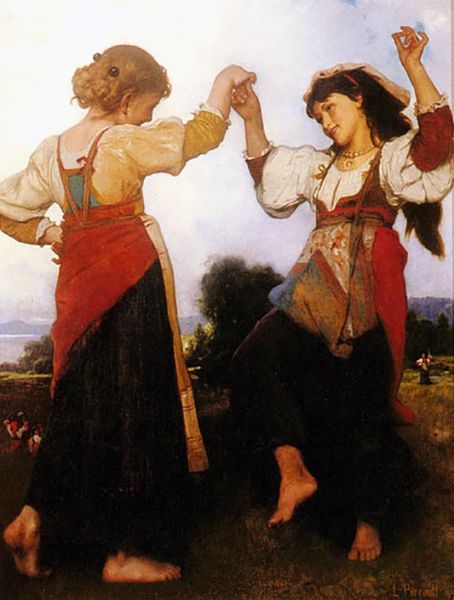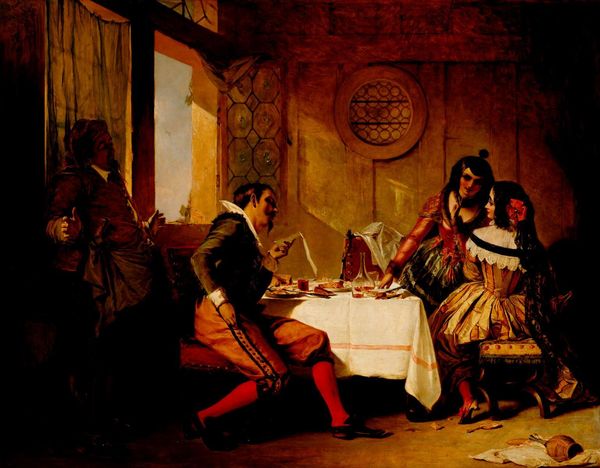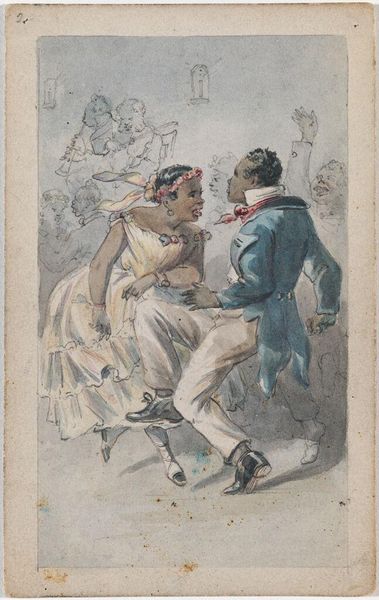
gouache
#
portrait
#
gouache
#
narrative-art
#
gouache
#
landscape
#
figuration
#
romanticism
#
costume
#
genre-painting
#
italian-renaissance
Dimensions: 53.5 x 36 cm
Copyright: Public domain
Curator: Let's consider "A carnation for the lady", a work by Filippo Indoni. Gouache seems to be the predominant medium. Editor: There’s something incredibly tactile about this piece—you can almost feel the rough texture of the fabrics, the cool smoothness of the stone wall. Curator: Observe the interplay of color and form. Indoni uses vibrant hues for the figures' clothing which contrasts subtly against the muted backdrop. The careful arrangement of these elements creates a balanced, harmonious composition. Editor: Agreed, but the materials tell more. Her ornate skirt, the boy’s roughspun vest, her woolen shawl—the painting seems very concerned with clothing and labor, each carefully considered element speaks of everyday life and local textile traditions. Curator: I'm also struck by the spatial dynamics. Note how the figures are positioned in relation to the landscape, and how it establishes depth and perspective, framing the central interaction. The gaze, the carnation itself all converge into a formal exercise of symbolic interaction. Editor: The gouache is thinly applied in areas. It gives an interesting texture to the fabrics. How much local labor did it take to create all those textiles being represented? We're also looking at consumption and display as Indoni turns a seemingly small event into art. Curator: Absolutely, it transcends simple observation to engage in a more elaborate dance of color and balance that constructs the meaning. Indoni orchestrates an event, guiding our eyes and feelings. The carnation, poised, becomes a signifier within a system, a pivotal piece of visual linguistics. Editor: Well, while it seems pretty simple, you can’t forget how important material choices can be—how the artist used gouache versus oil to represent social class through garments and context. It's the making of the image from materials up that shapes what we see. Curator: That said, the way Indoni organizes space, shape, and tone moves it beyond a documentary. Editor: And how fascinating that this little flower—so central to the composition—became more than simply what it is. Thank you.
Comments
No comments
Be the first to comment and join the conversation on the ultimate creative platform.
